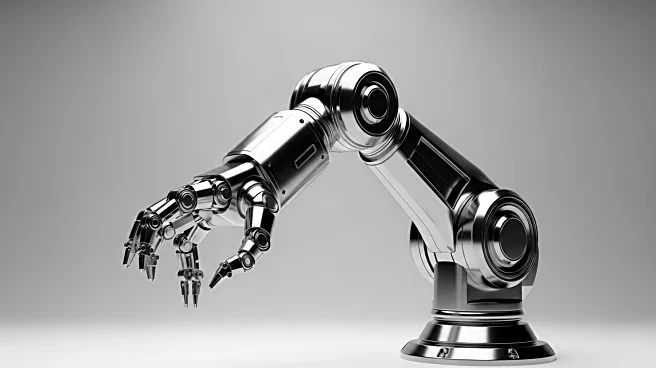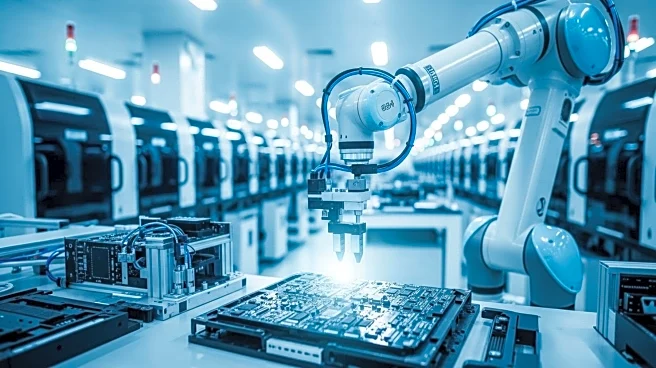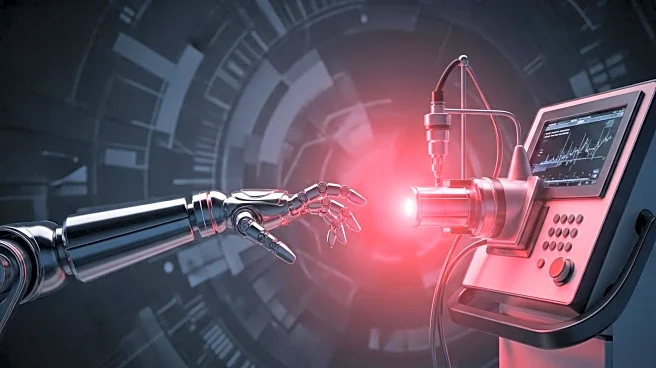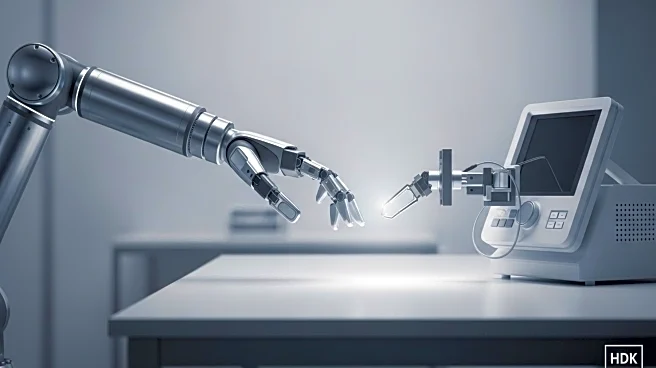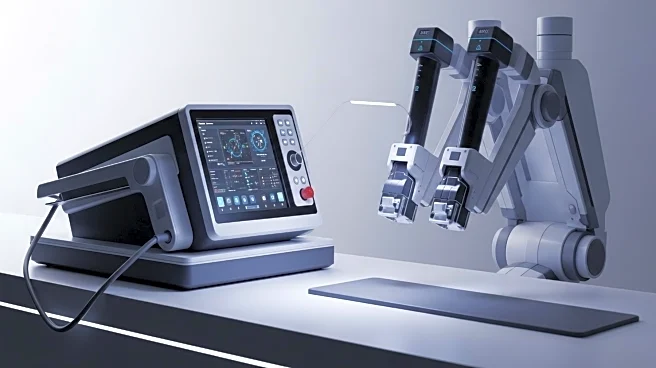What's Happening?
In a recent episode of The Robot Report Podcast, Peter Finn, Managing Director at BGL, discussed the evolving landscape of industrial technology, robotics, and AI. The conversation highlighted the dynamics of mergers and acquisitions in the robotics sector and the critical role of AI in shaping the future. Additionally, the U.S. government has initiated a national security investigation into imports of medical devices, robotics, and industrial machinery, aiming to reduce reliance on overseas supply chains. This investigation has sparked discussions about potential new tariffs on imported robots, which could impact U.S. manufacturing efforts. The Association for Advancing Automation (A3) is actively seeking industry feedback on this issue.
Why It's Important?
The potential imposition of tariffs on imported robots could significantly affect the U.S. robotics industry, which heavily relies on foreign-made industrial robots. Such tariffs might encourage domestic manufacturing but could also increase costs for U.S. companies that depend on these imports. The outcome of this investigation and the subsequent policy decisions could reshape the competitive landscape of the U.S. robotics sector, influencing investment and innovation. Stakeholders in the industry, including manufacturers and trade groups, are closely monitoring these developments, as they could have far-reaching implications for the sector's growth and global competitiveness.
What's Next?
The U.S. government has set a 21-day deadline for public comments on the proposed tariffs, and the A3 is preparing its response. Industry stakeholders are expected to engage in discussions to influence the outcome of the investigation. Meanwhile, the IEEE Humanoid Study Group is working on developing standards for humanoid robots, with a timeline of 18 to 36 months for completion. These standards could play a crucial role in guiding future developments in humanoid robotics, ensuring safety and interoperability.
Beyond the Headlines
The ongoing discussions about tariffs and standards highlight the broader challenges of balancing national security concerns with the need for technological advancement. The robotics industry must navigate these regulatory landscapes while continuing to innovate and adapt to changing market demands. The potential for increased domestic manufacturing could lead to job creation and economic growth, but it also requires significant investment in infrastructure and workforce development.


